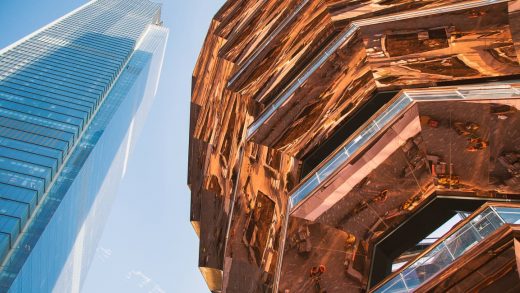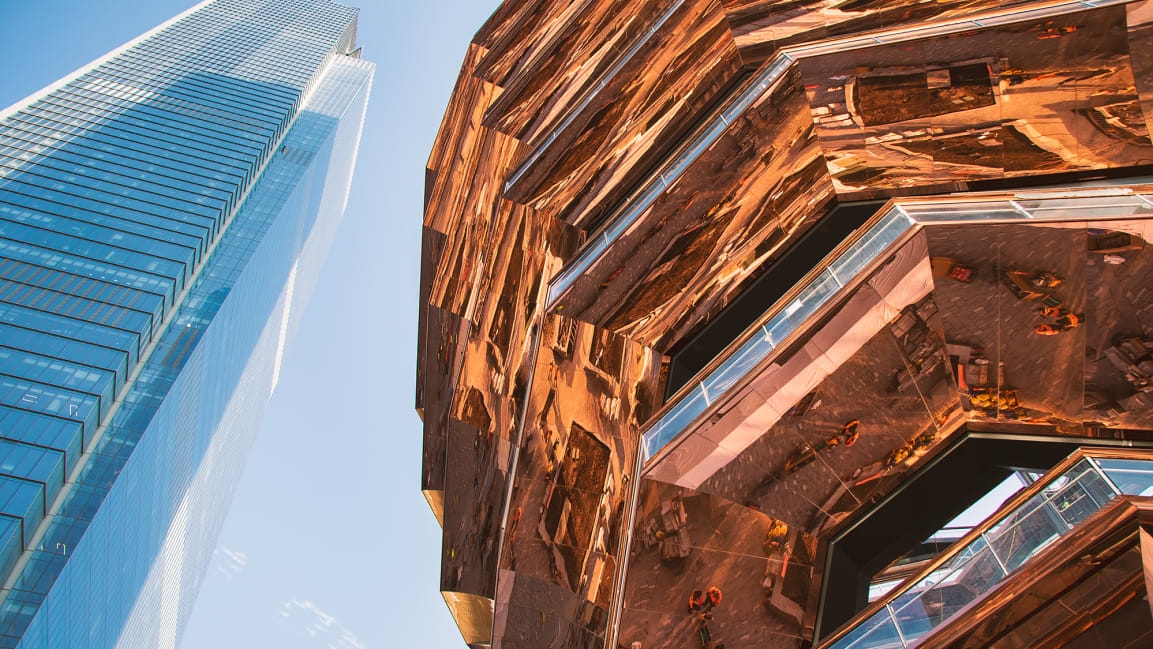A first look at Hudson Yards, NYC’s new $25 billion neighborhood
Hudson Yards, the largest mixed-use private real estate development in U.S. history, opens in New York City Friday. Here, 28 acres of office spaces, retail, gourmet food, an outdoor plaza, an arts nonprofit, and a structure intended to be “New York’s Eiffel Tower” co-exist with residential buildings and, eventually, a public school, all atop an active rail yard on the city’s West Side. Fast Company photographer Daisy Korpics got a close look at the massive–and controversial–new development. See her exclusive photos and read about how developer Related Companies and Oxford Properties Group built a $25 billion neighborhood from scratch, with help from the city.
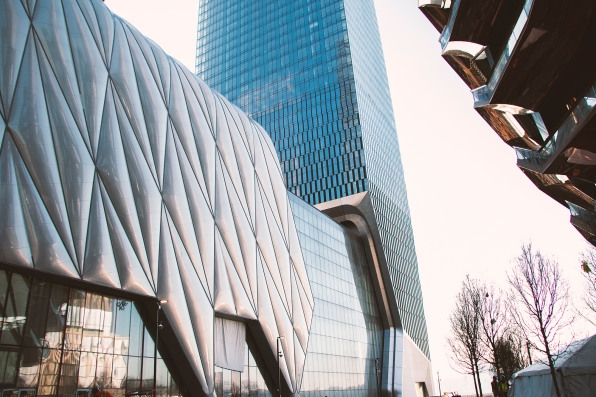
The Shed
The most exciting new building at Hudson Yards is The Shed, a shape-shifting performing arts center for the nonprofit of the same name by architects Diller Scofidio + Renfro, in collaboration with Rockwell Group. A nonprofit sitting next to the office buildings, million-dollar condos, and shopping options, the building can be accessed at street level without entering the rest of the neighborhood. “The building can physically transform to supports artists’ vision and the work they create,” according to The Shed Director Alex Poots. “It can grow into a theater environment, outdoor environment, gallery environment. [It can be] light-filled and even completely black.” The building, which has two gallery spaces and a versatile theater, can even double in size thanks to a shell that can expand from the base of the building onto the plaza. When the shell is deployed, the theater can accommodate an audience of 1,250 people sitting–or over 2,000 standing. The opening program “Soundtrack of America” is an exploration of African-American music put together by a group including director Steve McQueen and musician Quincy Jones.
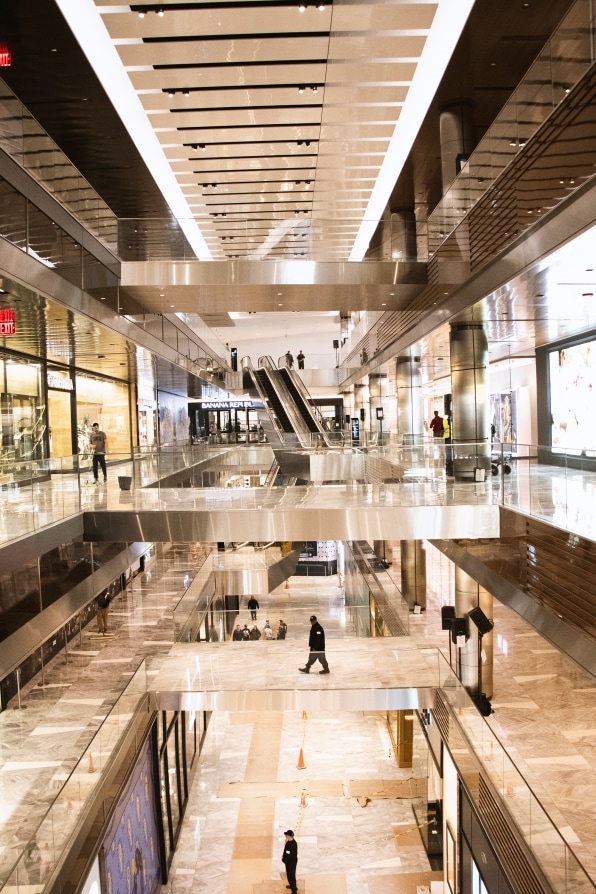
Tech-enabled retail
Situated between two skyscrapers and designed by Kohn Pedersen Fox, the retail center features more than 100 luxury and mass market brands spread across seven stories and one million square feet. That includes New York’s first Neiman Marcus on the fifth and tenth floors, which will have art collections and food and beverage stations and incorporate technology in their fitting rooms and mirrors to help shoppers find the perfect fit. The second floor will host digitally native companies including underwear brand Mack Weldon, health drink company Dirty Lemon, and shoe brand M. Gemi as well as Snark Park, an immersive exhibition space designed by Snarkitecture with a retail component and bar serving cereal from streetwear company Kith Treats. The center will also contain some of the 25 restaurants in the neighborhood including an American restaurant from the celebrated chef Thomas Keller and a Momofuku from David Chang. Spanish chef José Andres and the Adrià brothers (behind the celebrated el Bulli restaurant) have opened a 35,000-square-foot “Mercado,” celebrating all things Spain.
Related is experimenting with digital shopping carts that let shoppers purchase items in stores for delivery later, and monitor their shopping habits. Indeed, the neighborhood seems designed to make visitors spend as much money as possible: As soon as guests opt in to the neighborhood network, their movements and purchases will be tracked and they may be sent targeted offers, ads or discounts for shops and restaurants.”You’re going to walk on the High Line [an elevated park next door] and it’s gonna pick up that it’s near Hudson Yards and there are algorithms telling us who you shop with and you will get targeted emails and ads on social media,” retail specialist Esty Ottensoser says. Some might find that creepy. But this is increasingly where retail is headed.
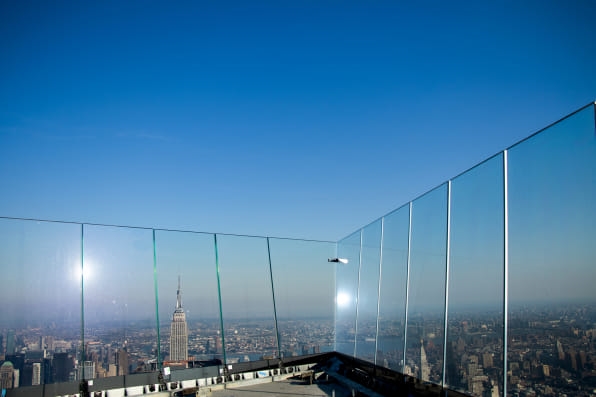
Office space galore, plus an observation deck
A diverse array of companies including startups, hedge funds, law firms, and media companies have made the neighborhood their new headquarters. Designed by Kohn Pedersen Fox, 10 Hudson Yards houses companies including the Tapestry Group, L’Oréal USA, Sidewalk Labs, VaynerMedia, and the Boston Consulting Group. At 1,296 feet high, 30 Hudson Yards, also designed by Kohn Pedersen Fox, is New York’s second tallest office building, home to businesses including HBO, CNN, Turner Broadcasting, Time Warner, Inc., KKR & Co. and Wells Fargo Securities. The deck on the 100th floor of 30 Hudson Yards (pictured here) is the highest outdoor manmade viewing area in the western hemisphere, and the fifth highest in the world.
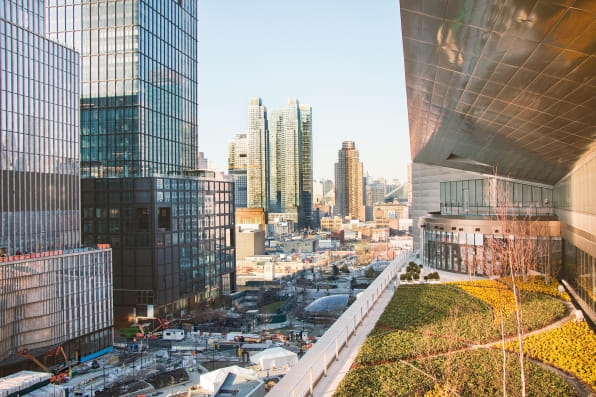
The gardens hide advanced engineering
The 28-acre space sits atop two platforms weighing 37,000 tons that cover a working rail yard with 30 train tracks, three rail tunnels, and the new gateway tunnel which will eventually connect the district to Penn station. Three hundred watertight chambers to enable construction underwater, 4 to 5 feet in diameter and 20 to 80 feet deep, were drilled between existing tracks to support the platforms. Related is using data from cellphones and cameras to monitor and react to traffic patterns, subway schedules, air quality, power demands, temperature and pedestrian flows, and visitors can opt in to receive notifications helping them get around Hudson Yards, purchase tickets to the Vessel (an art installation by architect Thomas Heatherwick), and get information about events and experiences in the neighborhood.
Over the platforms, the Nelson Byrd Woltz-designed, five-acre square and gardens feature more than 28,000 plants and 200 shade-tolerant trees native to New York state that were grown in New Jersey for four years before being planted. Lead landscape architect Thomas Woltz conceived of an urban oasis in Manhattan. “So much of the city is a sidewalk with traffic,” he says. “Now we have the opportunity for the car to take a backseat. People can spill out of the buildings into this beautiful civic space.” To make the space feel larger, Woltz made the paving of the plaza go from building to building instead of outlining them with curbs and gutters.
To keep the soil hospitable for trees and to allow them to grow to their full height, despite sitting above a rail yard that can reach 150 degrees, a system powered by 15 fans used in jet engines ventilates the tracks below, and cooling liquids are circulated through a network of tubing to protect roots. Because plants can only grow 18 inches deep, and trees 4 feet deep in the soil bed at Hudson Yards, sand and gravel were sandwiched between concrete to help the roots grow wide and shallow. To minimize the neighborhood’s burden on the city’s sewers, rainwater is collected in a 60,000-gallon tank and used to irrigate the plants,, saving 6.5 megawatt hours of energy and offsetting 5 tons of greenhouse gas a year, according to Related.
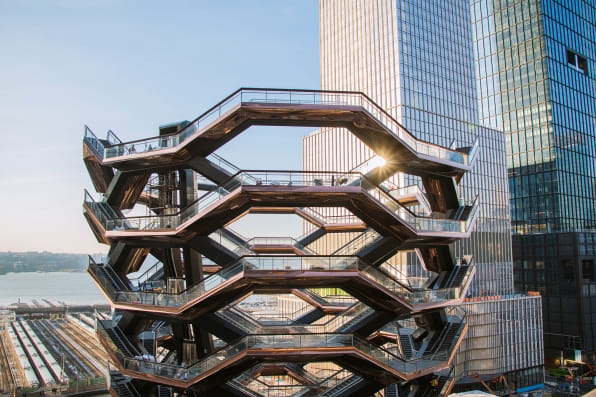
The Vessel: Public art and an outdoor gym in one
Architect Thomas Heatherwick’s $150 million climbable piece of public art is composed of 154 steel flights of stairs with 2,500 steps and 80 landings. Heatherwick sees it as an extension of the High Line, the elevated public park that ends at Hudson Yards. “We thought, ‘What if we made a mile of public space wrap around in the air?’” he says. He also wanted the piece to be interactive for visitors. “I was interested in making something really physical where you could use your body. It’s not just something you look at. When I was 16 visiting New York, I felt like there was something different about New Yorkers, there was more of an interest in health and the body. You’ve got people power-walking to work with their business suit on and white sneakers. Now of course we’re all neurotic, but I wondered whether [the Vessel] could be an extension of a very physical realm. I wondered whether it could be your exercise device.”
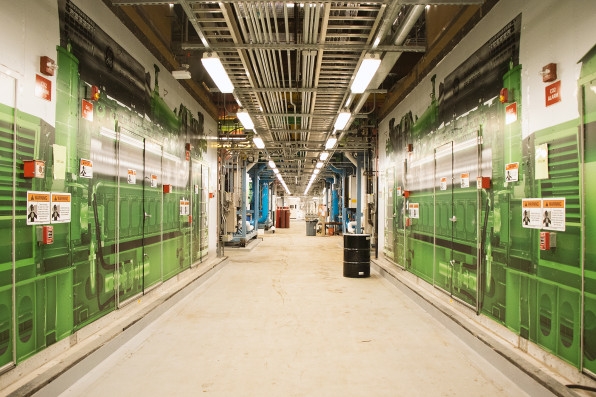
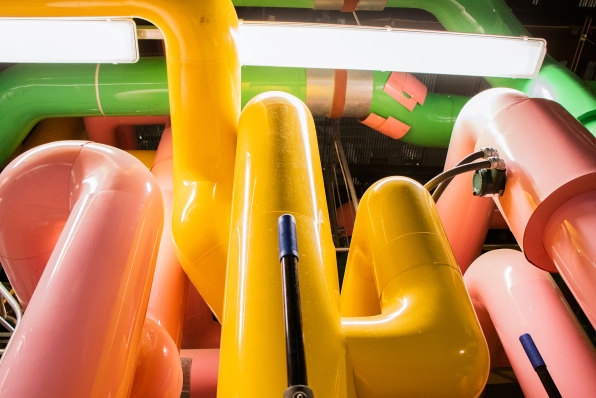
Energy on-site
A 13.2 MW cogeneration plant, which increases energy efficiency by producing heat and electricity at the same time, and additional 1.2 MW of gas-fired micro turbines generate power to keep building services, residences, and refrigerators running, even in the event of a power loss. This is crucial since Hudson Yards sits right along the Hudson River, which flooded during Superstorm Sandy in 2012 and is likely to flood again as climate change increases the frequency and severity of storms. The cogeneration plant ensures that the neighborhood could keep running without interruption. The waste heat that it creates is also used to generate hot and cold water that’ll be distributed to tenants’ floors for heating and cooling.
With its cutting-edge technology, gleaming surfaces, and impressively tall towers, proponents of Hudson Yards claim it is the neighborhood of the future–a model for large-scale real-estate developments to come. But sitting at 25 feet above street level, the neighborhood can feel like a (west) world of its own: a playground for the wealthy complete with luxury shops, wifi monitoring visitors’ every move, and condos starting at $1.95 million, all anchored by a crown jewel, the incongruously large (and expensive) $200 million Vessel. It doesn’t help that the city paid an estimated $2.2 billion in taxpayer money to help develop the project. “Hudson Yards will be the example of what any city will want to have. It’s what New York should be,” said Stephen Ross, the billionaire chairman of Related Companies. But will the rest of New York agree?
(36)

